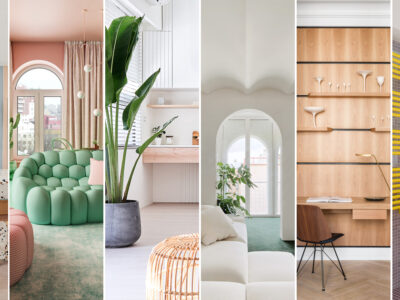Delhi, a city steeped in history and culture, holds a unique place in the heart of India. As the capital, it has borne witness to the rise and fall of empires, the fusion of traditions, and the embrace of modernity. This dynamic blend of the past and present is not only reflected in the city’s architecture and lifestyle but also in its interior design. The art of seamlessly merging traditional elements with contemporary aesthetics has become a hallmark of modern interior design in Delhi.
Delhi’s Timeless Appeal:
Delhi’s charm lies in its ability to effortlessly blend the old and the new. The city’s historic landmarks, bustling markets, and vibrant neighborhoods reflect the diverse layers of its history. It’s a place where ancient forts stand in juxtaposition with sleek skyscrapers, where ancient bazaars coexist with modern shopping malls. This dichotomy has found its way into the hearts of Delhi’s interior designers, who have embraced the challenge of infusing traditional elements into modern spaces.
The Role of Tradition in Modern Design:
While modern interior design often emphasizes clean lines, minimalism, and open spaces, there’s an undeniable allure in infusing traditional touches. Traditional elements can evoke a sense of nostalgia, cultural heritage, and a connection to one’s roots. By integrating these elements into contemporary spaces, designers not only pay homage to the city’s rich past but also create a unique and harmonious ambiance.
Traditional Elements That Stand the Test of Time:
Delhi’s traditional architecture, art, and craft offer a plethora of elements that can be seamlessly integrated into modern interiors. Let’s explore some of these elements and how they are redefining the aesthetics of modern homes and commercial spaces in Delhi:
1. Intricate Carvings and Patterns:
Delhi’s historic buildings are adorned with intricate carvings and patterns that narrate stories of the past. These ornate details, when translated into modern interiors, lend a touch of elegance and sophistication. Whether on wooden furniture, metal accents, or wall panels, these intricate designs add depth and visual interest to contemporary spaces.
2. Rich Textiles and Fabrics:
Delhi is renowned for its textile heritage, boasting a range of traditional fabrics like silk, brocade, and ikat. Incorporating these textiles into upholstery, curtains, and cushions brings a sense of opulence and luxury to modern interiors. These fabrics not only exude warmth but also serve as a bridge between the past and present.
3. Mosaic and Inlay Work:
Mosaic and inlay work have adorned Delhi’s monuments for centuries. Translating this craftsmanship into modern interiors through tiles, tabletops, or decorative accents infuses spaces with an air of grandeur and cultural significance.
4. Filigree and Jali Patterns:
Delhi’s jali windows and screens are a testament to its architectural finesse. Modern interior designers often reinterpret these jali patterns in partitions, room dividers, or even lighting fixtures. They cast captivating shadows and patterns, adding an element of mystique to the contemporary setting.
5. Traditional Art and Murals:
Mural art has adorned Delhi’s walls for generations, depicting tales of love, heroism, and spirituality. In modern interiors, these murals find their place as statement pieces, transforming walls into canvases that echo the city’s artistic heritage.
Creating a Harmonious Fusion:
The key to successfully infusing traditional elements into modern interior design lies in achieving balance and harmony. The juxtaposition of old and new should be deliberate, with each element complementing the other. Here are some strategies that designers employ to achieve this fusion:
1. Selective Placement: Choose a few key traditional elements as focal points. These could be a carved doorway, a handwoven rug, or a vintage piece of furniture. This selective placement prevents overwhelming the space with excessive traditional elements.
2. Color Palette: Use a color palette inspired by traditional motifs and hues. Rich jewel tones, earthy neutrals, and vibrant accents can tie the modern and traditional elements together.
3. Thoughtful Integration: Integrate traditional pieces within a modern context. For instance, a vintage chest could serve as a unique coffee table, or a traditional wooden screen could be repurposed as a headboard.
4. Fusion Furniture: Opt for furniture that combines traditional craftsmanship with modern forms. A contemporary sofa with intricately carved legs or a minimalist chair upholstered in traditional fabric creates a captivating fusion.
5. Contemporary Artifacts: Incorporate contemporary interpretations of traditional artifacts. For example, a modern lamp with a jali pattern or a minimalist sculpture inspired by traditional forms.
Case Studies:
Delhi’s interior designers have excelled in the art of fusing tradition and modernity. One project involved transforming a modern apartment into a haven of cultural fusion. A hand-painted mural depicting Delhi’s historic landmarks adorned one wall, while sleek modern furniture and clean lines ensured a cohesive blend.
In another project, a restaurant embraced Delhi’s food and heritage by incorporating traditional motifs into its interior. From the cutlery to the ceiling, traditional elements coexisted with contemporary design, creating a visually captivating dining experience.
Conclusion:
Delhi’s essence is defined by its ability to bridge the gap between time periods, cultures, and aesthetics. Modern interior design in Delhi draws inspiration from its rich heritage, reimagining traditional elements within the contemporary context. The result is a harmon

